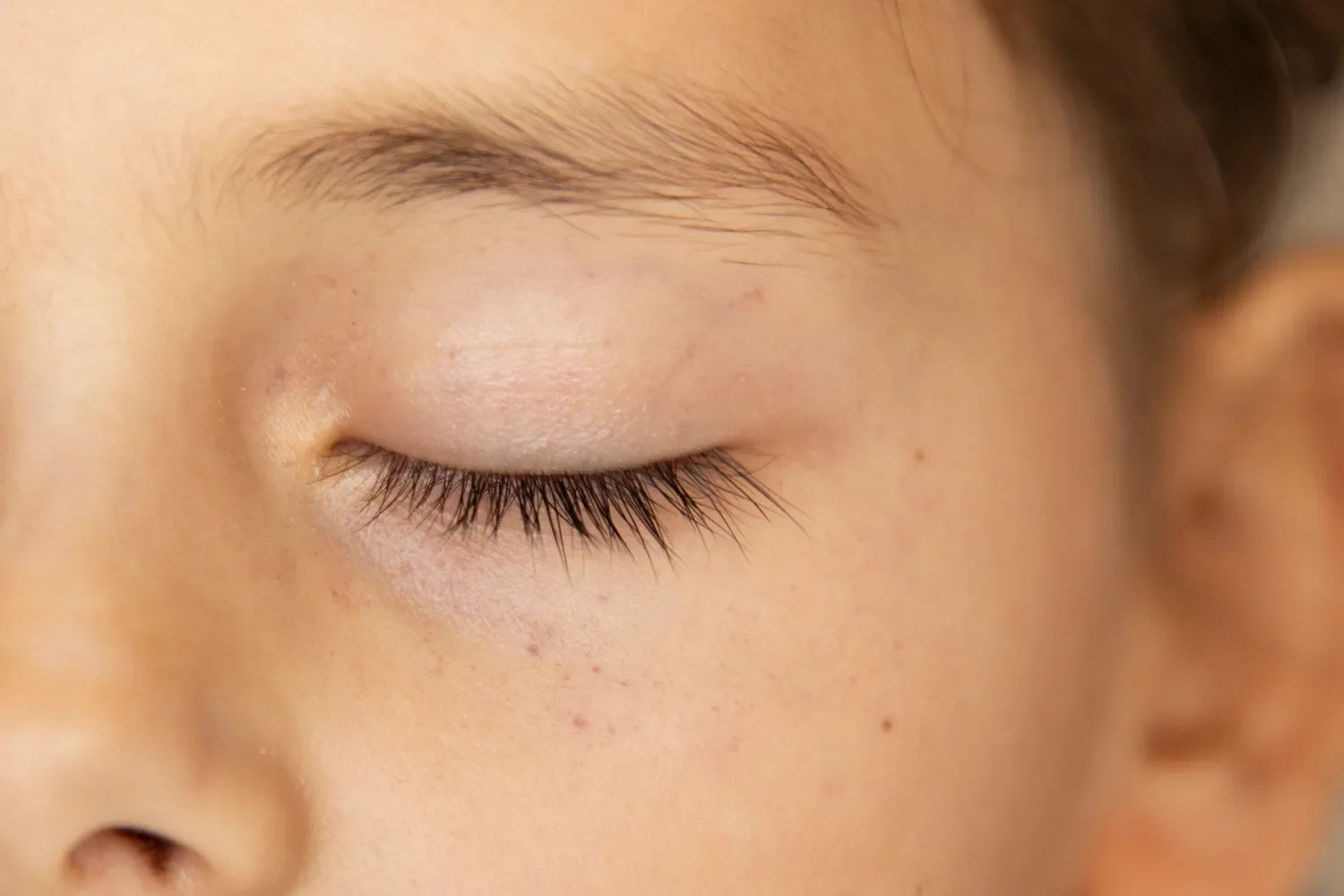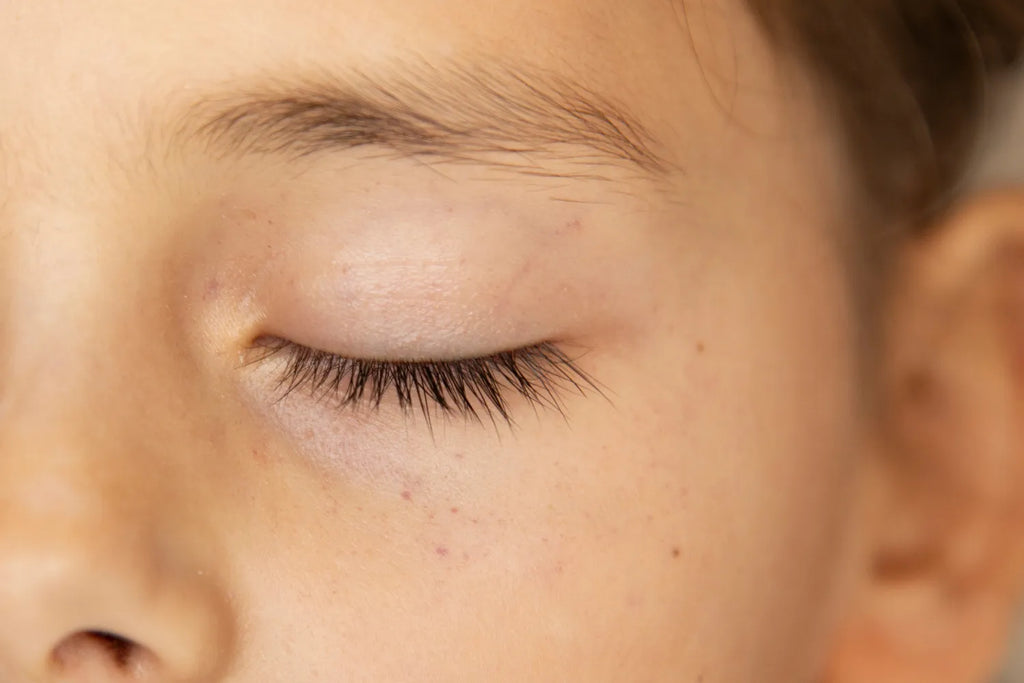
- Blog
- /
- Petechiae in the Eyes: Signs, Causes, and...
Petechiae in the Eyes: Signs, Causes, and Treatments
It's never fun to notice a new sign of a potential health problem and not know why your body is reacting in a certain way — if you’re spotting petechiae on your skin and eyes, it’s helpful to understand the potential causes and treatment methods.
Petechiae can be a sign of a serious underlying medical condition, but it’s not always a cause for concern. It's important to see a doctor to ensure there's nothing else going on.
In this guide, we'll explain what petechiae are and why they occur, and you'll also learn about the various treatment options. Whether you're personally dealing with petechiae or are interested in eye health, we're going to answer all your questions.
What Are Petechiae? 
Petechiae, or purpura, resemble tiny, flat red, brown, or purple patches. These spots can occur on the body and around or in the eyes, and they result from bleeding under the skin or in the mucous membranes. The most common areas for petechiae to develop are the arms, legs, torso, inside the mouth, and eyelids.
These spots can look rash-like, but they aren't a rash. With a rash, you can press on it and your skin will change color — but petechial spots will maintain their color. These spots are not typically painful or itchy, although there are rare occasions where they can be tender to the touch.
You should always have a doctor examine petechiae, as they may indicate a serious health problem. It's better to be safe than sorry. A doctor can explore all of your symptoms, determine the cause, and offer treatment options.
Before you can see a doctor, try to keep checking your spots and note any changes. The more information you can provide your doctor, the better, although you may have to undergo a few tests before figuring out the cause.
What Causes Petechiae?
Petechiae might seem like guests who arrive without an invitation, but there are several reasons why they show up unannounced.
Here are some of the possible causes of petechiae:
-
Endocarditis: This is an infection around the lining of the heart. Alongside petechiae, symptoms include fever, chills, fatigue, body aches, and shortness of breath.
-
Infection: A bacterial illness can result in petechiae. Viral infections may also play a role. Other symptoms of an infection may be a sore throat, swollen glands and tonsils, fatigue, fever, body aches, nausea, and vomiting.
-
Injury: Sometimes, the skin just takes a hit (quite literally). A bug bite, severe sunburn, or just rubbing your eyes too hard can cause damage and leave behind these red spots. The delicate blood vessels in our eyes can burst under pressure.
-
Medications: Certain medications, including specific antibiotics, antidepressants, and blood thinners, are another common cause of petechiae.
-
Mononucleosis: Mono is a common infection that typically spreads among young people. Other side effects include fatigue, headache, sore throat, swollen glands and tonsils, and fever.
-
Straining: Your blood vessels act accordingly when your body is under too much pressure. Whether it's too much strain from vomiting, lifting heavy weights or objects, or even giving birth, petechiae can occur.
-
Thrombocytopenia: This condition results from a low platelet count. It can cause easily bruised skin, frequent nosebleeds, and yellowish eyes.
-
Vasculitis: When inflammation rears its ugly head, petechiae may occur. The swelling of the tiny blood vessels can be accompanied by fever, headache, weight loss, and nerve problems.
-
Vitamin C Deficiency: Sometimes, not getting enough vitamin C can lead to scurvy — yes, like the pirates. So, drink your orange juice, and pay attention to swollen gums, achy joints, easy bruising, and shortness of breath.
Aside from this list, there are other potential reasons why you may be experiencing these red dots. Your doctor can help make a diagnosis and offer the proper medical attention.
How Can You Address Petechiae?
As you can imagine, treatment will depend on the underlying cause, and it’s important to consult your healthcare provider if you’re noticing petechiae and aren’t sure why. Many of the causes of petechiae require medication, and your doctor will be able to guide you.
Your doctor may prescribe the following for petechiae:
- Antibiotics
- Corticosteroids
- Immunosuppressants
Some medications, like penicillin, are the cause of your petechiae. If you notice it happening after starting a new medication, seek medical advice from your doctor.
Petechiae do not always result from an underlying condition, so you may not require a specific medication or treatment. In this case, resting and drinking lots of water can help. You can also try home remedies, but petechiae can resolve themselves.
Here are some possible home remedies:
- Cold compresses
- Rest
- Fluids
- Over-the-counter medications
- Avoiding strain by switching to lighter weights
- Diet change, if a vitamin deficiency is causing your petechiae
The red spots generally disappear after two to three days, but glasses can also make the spots less noticeable in the meantime. Pair Eyewear offers glasses that flatter any face shape, and we also offer prescription lenses and lens coatings to meet different needs.
How To Prevent Petechiae

There is not always something you can do to prevent petechiae from occurring. However, if you don't have an unavoidable underlying condition, there may be a few things you can try.
As we know, infections are one cause of petechiae, and many ways exist to avoid them.
- Clean high-touch surfaces like doorknobs and cabinets frequently.
- Avoid sharing cups.
- Wear sunscreen or protective clothing, especially when you'll be outside for a long time. Make sure your sunglasses offer UV protection, like ours at Pair Eyewear.
- Apply insect repellent to prevent tick bites. You can also wear protective clothing and check your body afterward.
- Wash your hands frequently.
Staying healthy is the best way to avoid underlying conditions that can cause petechiae. However, even the healthiest people can experience health problems.
Healthy habits to implement for your overall wellness include:
- Eating a balanced diet
- Getting regular exercise
- Practicing good hygiene
- Making annual doctor appointments a habit
Final Takeaways
Petechiae are small in size, but their presence can indicate significant underlying health concerns. You may have an infection, injury, medication sensitivity, vitamin deficiencies, or other issues leading to petechiae.
While petechiae can clear up on their own if they are not connected to an underlying cause, don't ignore the symptoms. Seeing a doctor will help you receive a timely diagnosis or just put your mind at ease. They can recommend the best treatment options.
Listen to your body and take proactive steps towards a healthier life. You can protect your eyes and vision by wearing high-quality glasses from Pair Eyewear.
Sources:
Petechiae - StatPearls | NCBI Bookshelf
Petechiae: What Are They, Causes, Treatment & Prevention | Cleveland Clinic
Stress Less with Healthy Habits Infographic | American Heart Association